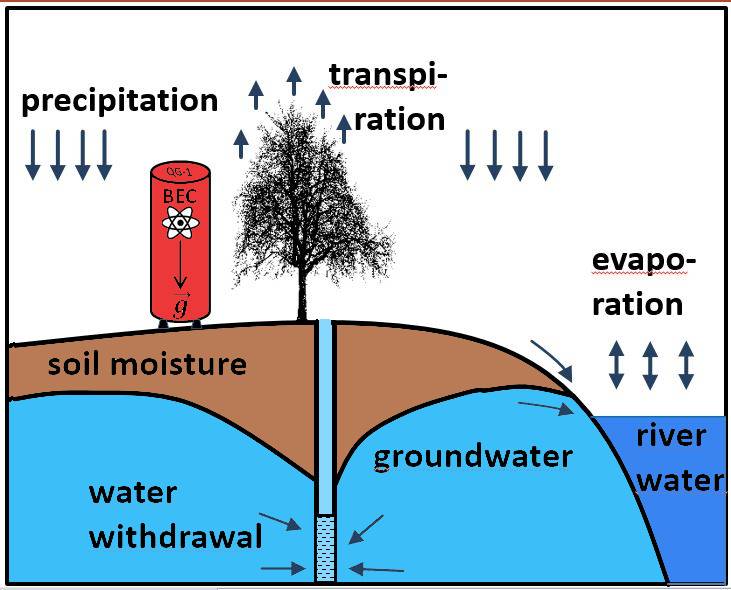For the groundwater management in central Europe, ground-based gravimetry provides a unique potential to monitor temporal variations in the subsurface water content for local areas. The atomic Quantum Gravimeter-1 (QG-1) of Leibniz Universität Hannover (LUH) is in its final phase of development (A01) and will be ready for geodetic and gravimetric applications latest in 2021. The QG-1 capability will be demonstrated indoor and also in a field application as an advanced absolute gravimeter allowing effectively the surveying of gravity variations due to groundwater changes on the uncertainty level of 10 nm/s².
Relative gravimeters suffer from non-linear drift behaviour of their measuring spring, uncertainties of their calibration and deficiencies in the datum level definition. Employing classical absolute gravimeters demand high personal requirements and the measuring progress is cumbersome (e.g. 3 days per point for highest accuracy demands). In addition, a rigid setup platform (e.g. concrete slab) is needed to avoid a systematic impact on the interferometric length measurements caused by instrumental vibrations, produced by transportation of the macro-scopic test mass, rebound of instrument, and of setup foundation after the release of the test mass.
The potential benefits of this quantum gravimeter will improve the economic efficiency of absolute gravity campaigns significantly providing highest accuracy with less personnel in less campaign time and with faster progress. Technical characteristics are: no long-term drift effects, no instrumental vibrations due to the measurement procedure, high precision, and fully automatized operation.
The QG-1 development and its forthcoming deployment faces a social challenge with respect to the sustainable use of fresh groundwater as an economic requirement. The objective of this project is to demonstrate the potential of QG-1 improving the monitoring of gravity variations caused by groundwater mass changes (seasonal and inter-annual signals). Quantum gravimetry may become the new user reference standard in terrestrial gravimetry.


 ©
Timmen
©
Timmen
Objectives of C01 - Groundwater Gravimetry and QG-1
- demonstrate the scientific application of QG-1 technology shows a higher effectiveness (time and personnel expenditure, uncertainty) with respect to classical instruments. Thus, quantum gravimetry may become the new user reference standard in absolute gravimetry.
- prove that the gravimetric technique becomes an accepted research tool for groundwater geophysics and hydrogeology
- Study of fresh-saltwater evolution
Executing Persons
Principal Investigators
Early Career Researchers
Publications
Showing results 1 - 3 out of 3












